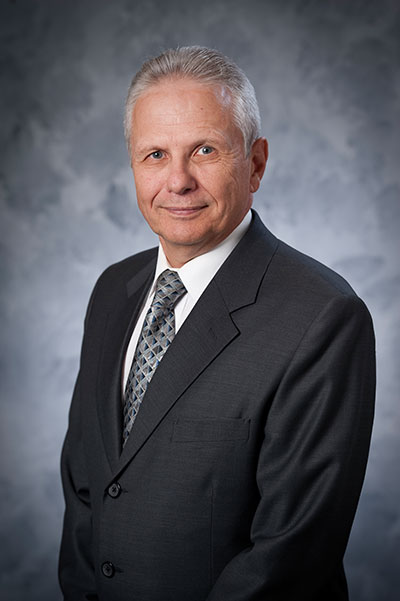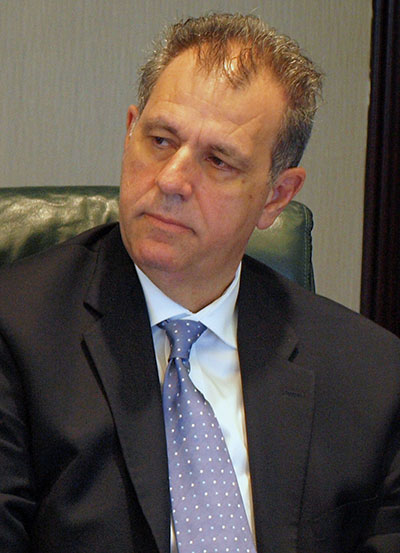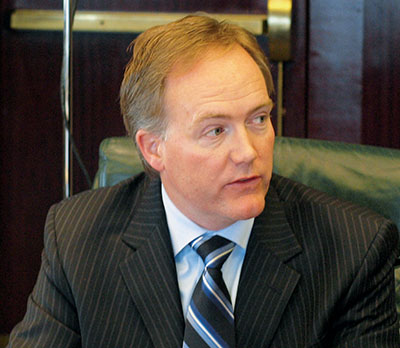
Features
Operations
CBAA at post-POC crossroads
The March 2010 announcement that Transport Canada was clawing back private operator certification and oversight functions from the Canadian Business Aviation Association (CBAA) did not come as a complete surprise.
May 6, 2013 By David Carr
The March 2010 announcement that Transport Canada was clawing back private operator certification and oversight functions from the Canadian Business Aviation Association (CBAA) did not come as a complete surprise. Transport Minister John Baird had indicated as much in the House of Commons three months earlier. Still, no amount of foreshadowing could soften the final blow when it came.
 |
|
| The CBAA is searching for ways to better represent the interests of Canadian business aviation operators. Photo: Bombardier |
Transport Canada transferred authority to issue private operator certificates (POC) to the CBAA in 2005. The association and its membership invested time and resources on a successful ramp-up strategy, only to see that work come undone five years later. It raised concerns over the effectiveness of CBAA’s lobbying effort between Dec. 1, 2009, when Baird sketched out the government’s thinking and March 16, 2010, when a formal announcement was made. Some operators now question the value of CBAA post-POC, while others think Canada’s private aviation sector may be better represented as a chapter of the U.S. National Business Aviation Association (NBAA).
 |
|
| "This industry would die if we weren’t able to do what we have been able to do and what we hope to do in thxe future.” – Merlin Preuss Photo: CBAA |
Neither the disappearance of CBAA nor integration with the NBAA is in the sector’s interest, says Merlin Preuss, the association’s vice-president of government and regulatory affairs. “Start with the value proposition. This industry would die if we weren’t able to do what we have been able to do and what we hope to do in the future. You are not going to find the Royal Bank of Canada or Amaco going to bat for this sector against the federal government. It’s not their business and they are not going to waste their silver bullets on their flight department. Unlike an issue with Air Canada, if we weren’t there, there would be no business aviation. It’s that simple.”
 |
|
| "The regulatory framework under which CBAA deals on behalf of its members, or what our members face at the operational level, is much more complex because all these different agencies have their sphere of influence." – Sam Barone Photo: Matt Nicholls |
Speaking at a Wings industry roundtable in 2012, Sam Barone, who recently stepped down as president of the CBAA to become vice-chair of the Canadian Transportation Agency, illustrated the evolution of Canadian air transport and the impact it has had on CBAA. “Twenty-five years ago, you only had to make a call to Transport Canada because they controlled airports and they controlled [the air navigation system]. Today, if you have an issue in Edmonton you’ve got to call the Edmonton Airport Authority. If it’s a NAV Canada issue, you are dealing with a NAV Canada entity, and you are dealing with another Transport Canada official on top of that.
“The regulatory framework under which CBAA deals on behalf of its members, or what our members face at the operational level is much more complex because all these different agencies have their sphere of influence.”
Setting aside POC, the association has navigated through a thicket of agencies and authorities to come out with some positive wins for its membership, including working with airport authorities in Toronto, Calgary and elsewhere to pry open additional night slots for business aviation; working with the Canada Border Services Agency to standardize point of entry regulations for private operators across the country; and, partnering with the NBAA, the International Civil Aviation Organization and the International Business Aviation Council to pressure Europe away from imposing a discriminatory, airline-style carbon tax based on maximum payload rather than aircraft weight, an important consideration given the increased global profile of Canadian business aviation.
“None of this happens without consultation,” Debra Ward, CBAA’s manager for marketing and industry relations, points out. “Wherever there is flying there are rules and rules tend to yield to the larger players. Business aviation is quite small in the aviation community. So when we show up at an airport committee to argue access or de-icing issues, we are competing against the major airlines. That can’t be done on an ad hoc basis.”
Nor can it be done should CBAA membership be absorbed into the NBAA, even if the powerful Washington-based association were to consider opening a northern chapter. The Canadian operating environment is different from the American one, and Canadian issues would get short shrift despite the best of intentions. “We are dealing station by station, FBO by FBO and shift by shift,” Ward adds. “It takes an enormous amount of detail work.”
Adam Keller, president of Chartright, a Toronto-based business aviation service provider and aircraft management company with operations in Calgary and Vancouver, agrees. “We would not be well represented as an NBAA chapter – they would not understand our issues.” Keller, a former CBAA board member, still believes there is a role for the CBAA, but feels the association has stumbled in recent years, especially in representing the grassroots. “There is a communications problem. They don’t succinctly tell us what they are doing, so nobody knows how to put a value on them.”
Ironically, POC may have helped to drive a wedge between CBAA and its membership, and it is the cancellation of the program that will bring the pieces together again.
“CBAA was a much plugged in grassroots organization. They had to understand our challenges because it was membership driven. With POC it became mandatory that all operators had to pay. They gravitated toward the easy money and lost touch with the grassroots issues,” Keller says. “The government taking back POC is a huge penalty to the industry. It is also a tremendous loss of revenue to the CBAA, and it will drive them back to the grassroots.”
The biggest challenge facing operators is that since the 2005 budget cuts, Transport Canada no longer has the resources or staff to take on what it has taken back, resulting in lengthy delays for an operators certificate.
 |
|
| “You make a phone call to your Transport Canada inspector and tell him you are adding a new aircraft type arriving in August. I’d like to be able to fly it the day it arrives." – Bill McGoey PHOTO: Matt Nicholls |
At the Wings industry roundtable, Bill McGoey, president of the Edmonton-based Morningstar Group, which includes an all-cargo airline operating exclusively for FedEx, explained the problem. “You make a phone call to your Transport Canada inspector and tell him you are adding a new aircraft type arriving in August. I’d like to be able to fly it the day it arrives.
They point to their service time of 200 days and tell us to expect the maximum service time. It is not a problem with the inspector and I’m not saying they aren’t doing the best they can. But when you say, ‘I can’t park my airplane’, they say please complain to the folks in Ottawa, let them know that you are not happy.”
The situation is in sharp contrast to service levels under the abandoned POC program. “Operators could get things done in a day or two,” Preuss points out. “Now it takes three to four months. That’s what’s killing us right now. They can’t get the service levels they were used to because there isn’t the staff.”
Things are likely to get much worse. This year’s federal budget was the first in modern history to not allocate budgets and to impose spending cuts to individual ministries. Transport Canada is expected to be one of the ministry’s hardest hit. The cuts may not be as deep as sequestration cuts in the United States, which are forcing the Federal Aviation Administration to close down airport towers, slow certification and toss 47,000 employees on 11 days of involuntary furlough, but they do raise the potential for a longer, more cumbersome and uneven regulatory process across the country.
“With going across the board at Transport, the only way business aviation is going to get anything is if the CBAA is there constantly and reminding them we are a priority. Because all other sectors of transport – not only air transport – are going to be affected as well. The loudest voices are going to get the first cut of what they want,” Ward says.
Preuss points out that while shutting the door on POC was a politically motivated mistake, it is in the past. CBAA must deal in the new reality, which is to make the new system workable for its members. That involves streamlining the regulatory process to start bringing it up to the speed of the industry. He insists that this is not an attack on Transport Canada safety inspectors, who are managing the hand they were dealt, “but nobody is growing here because there is too much bureaucracy and too-low service levels.
“We have been really successful in pulling the situation back with the new regulations. I can’t say too much because of confidentiality agreements. Are we going to get to where we were before? No. But we are going to be a lot closer to where we were before. I just wish we could get the new regs out sooner.”
Being closer still puts private aviation in Canada steps behind the Americans, and behind other professions and sectors in this country that are industry regulated. “The government was unprepared and will be hard pressed to provide the service that was offered by the CBAA,” Keller insists.
Interestingly, the next round of government budget cuts could work in the industry’s favour.
 |
|
| Business aviation operators like the Morningstar Group in Edmonton are looking for stability within the CBAA so its interests can be better represented in Ottawa. Photo: Morningstar Group |
“Regulations do two things,” Preuss says. “They may impede day-to-day operations, but they also add to the regulatory overhead. Every time you add a regulation you add to your cost. There is also the cost to the industry. We have been very successful to this point in getting [Transport Canada] to understand that whatever new regulatory regime we ultimately come up with should have the lowest impact possible on them and us. The more you can get industry to do the better off everybody is going to be.”
Business aviation in Canada has thousands of moving pieces. Airport access will continue to be a concern, as will “regulation creep” and Transport Canada’s habit of applying an airline template to all sectors in areas such as fatigue rules, largely seen by the on-demand industry, including helicopter operators, as the next regulatory hill to die on.
Keeping the pieces moving in a direction that keeps business aviation on an even footing with the rest of the world demands a single voice.
Was the unintended consequence of POC a blurring of the CBAA’s focus? Perhaps. But Ward insists the association is tackling existing and emerging challenges with eyes wide open. “The shift [away from POC] and the new regs has taken up an enormous amount of our equity in time and expertise. Once this is resolved, we will be able to redeploy a lot of our internal resources on a host of other issues that we would like to spend more time on, such as financing and the tax financial structure around our industry, which are enormously complicated issues.
“We are taking the association in the right direction to help our members do their business better. That is our core reason for being.”